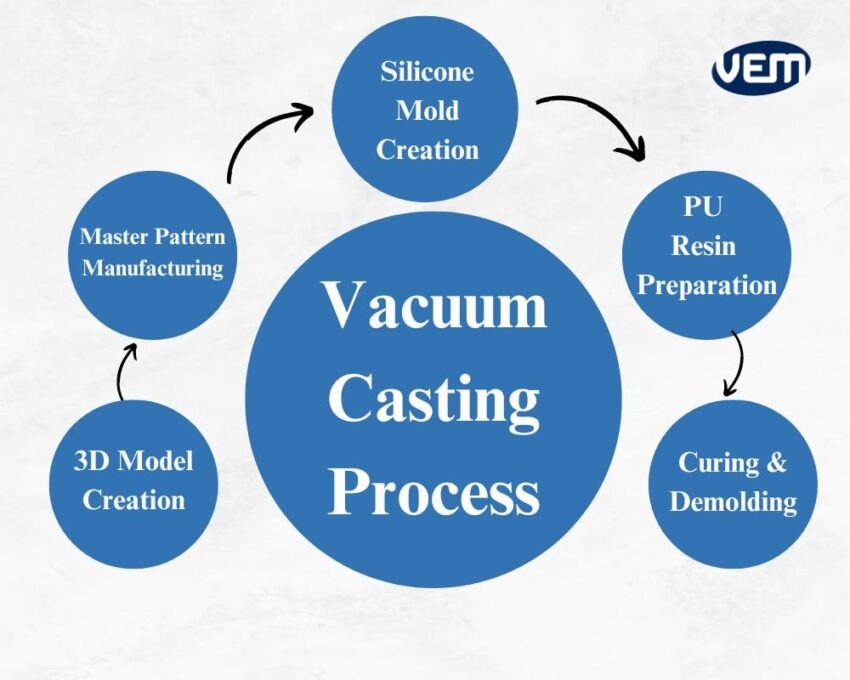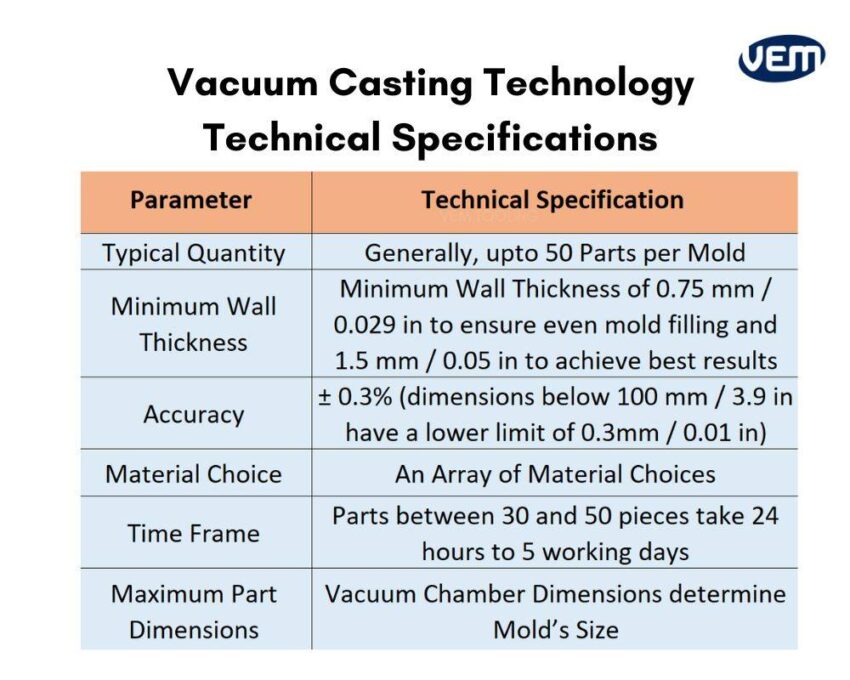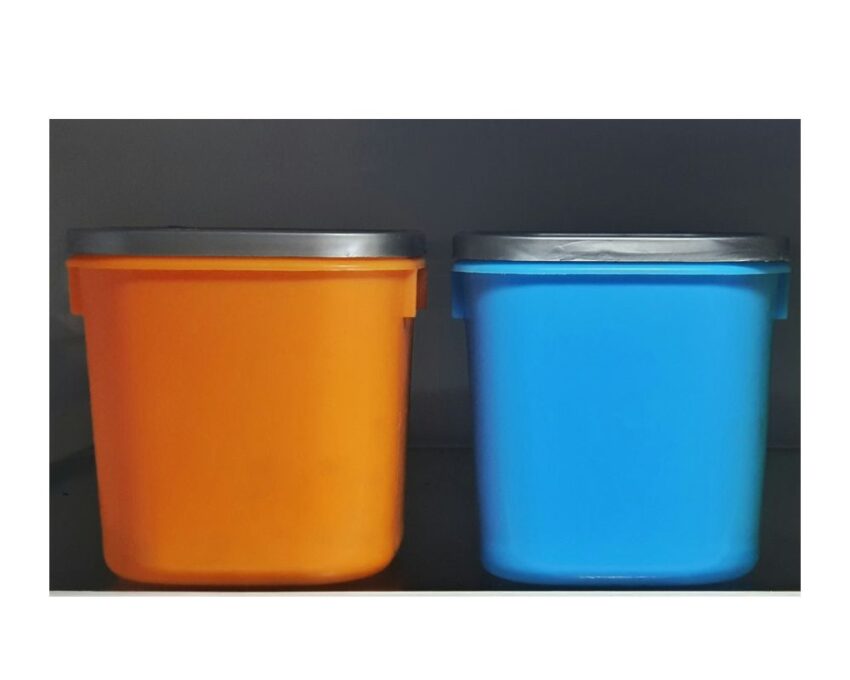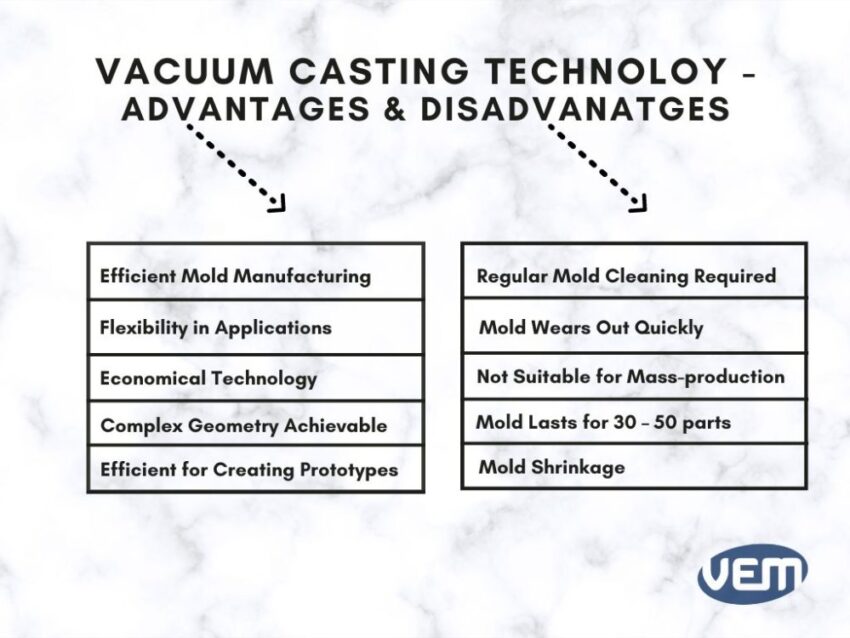

Vacuum casting is one of the most cost-effective technologies to produce high-quality plastic parts which can be similar to injection molding parts in low volume.
The vacuum casting technique is extremely flexible. It enables the manufacturing of functional parts with complex shapes that are of small and large sizes in a short time and without investing in steel tools. A vacuum casting system is an economical alternative to injection molding as the production cost of vacuum casting prototyping and manufacturing is comparatively lower however; it has its challenges as well. In this article, we discuss the process of vacuum casting, its applications, and various other aspects in detail.
Vacuum casting is referred to as silicone molding, polyurethane casting, or urethane casting as polyurethane resin, is employed as the casting material.
The parts that are created and manufactured through vacuum casting technology are suitable for functional testing, assembly, or final use.
A vacuum casting system is similar to the traditional manufacturing process of injection molding, where molten resin is poured into the silicone mold whilst using a vacuum. This technology can create intricate details and complex components. In addition, it also supports the possibility of plastic over molding, insert overmolding, and a wide array of finishes.
Vacuum casting primarily employs silicone molds to create plastic and rubber components under vacuum and is an extremely adaptable manufacturing technique that can produce complex parts in polyurethane resins and cast nylon.
Since the process is under vacuum, it produces high-quality bubble-free casting that imparts a smooth surface texture without any blemishes.
Vacuum casting is also a rapid prototyping technology that is excellent for batch production and low-volume production runs as it enables the duplication of several plastic parts, using a silicone mold.
You should note that different polyurethanes can be used for manufacturing various products as polyurethanes have distinct properties such as structural rigidity, elasticity, flexibility, shock, and temperature resistance. In addition, since there are various commercially available vacuum casting resins, it is possible to fulfill a wide range of design requirements such as temperature requirements, surface textures, hardness, etc.
The vacuum casting process is similar to the injection molding process. The primary difference between the two technologies is in the mold type. In the case of injection molding, the molds are made of aluminum, steel, etc. whereas in the case of vacuum casting, molds are made of silicone.
The process of a vacuum casting system includes several steps and is relatively manual. Let’s understand these process steps further:

The very first step in creating the vacuum cast is creating a 3D model of the component.
The master pattern is created using design guidelines that are similar and typically used for creating molds in injection molding. The calculations must be correct before creating the 3D mold as any type of deformities in the 3D model can lead to aesthetic or functional defects in the final product after casting.
The mold’s master pattern is created via 3D rendering and is the primary mold pattern that is used further, creating the silicone molds which are then used for casting.
The master pattern is a prototype that is used for creating silicone molds and is typically manufactured via SLA 3D printing or CNC machining. The type of method that is employed is entirely dependent upon the material properties and the part complexity.
Since the silicone molds are exact copies of the master pattern, any type of deformation in the pattern will translate into the silicone molds as well. Thus, an extremely high degree of precision is required while developing and manufacturing the master pattern.
The master pattern is further employed to create an imprint in the silicone mold.
The next step is to make the silicone molds. Silicone molds are made directly using the master pattern and a casting box.
The cores and inserts are fitted on the inside of the master pattern which is then suspended inside the casting box. In addition, casting gates to pour molten silicone and risers to facilitate the removal of the final mold are also placed inside the casting box. The casting box is now ready for manufacturing the silicone mold and the process is listed below:
The entire process is completed under a vacuum. This ensures that the defects and deformations are minimal to none. The silicone mold can be further, used to duplicate parts in various materials and colors. You can also polish the mold impressions to create various types of surfaces.
The polyurethane resin material is prepared before casting and if a particular color is required, then it is dyed in the required color.
At this stage, the polyurethane resin mixture is prepared by mixing the resin and other casting components, such as pigments and other agents. The type of polyurethane that is used is largely dependent upon the product type that is supposed to be manufactured. You should note that there are various types of polyurethanes available and they have distinct structural qualities.
The resin mixture is created by combining two parts of the resin and heating this mixture at 40℃ / 104℉. The color pigments or the dyes are also mixed in with the resin at this stage. You should note that the resin and the pigments are completely mixed and a homogeneous solution before pouring the mixture into the molds.
Resins and the color pigment are fully stirred and deaerated for 50-60 seconds under a vacuum which is then poured into the mold under a vacuum to avoid the formation of any voids or air pockets.
This resin mixture is poured into the silicone molds through a funnel. The distribution must be uniform and there shouldn’t be any formation of air bubbles. The vacuum ensures that the molds are free from air bubbles and it also helps to remove any type of flow resistance that is caused by air pockets.
Once the resin mixture is poured in, the mold is sealed and ready for casting.
Once the material preparation is complete, the silicone mold is placed in the vacuum casting machine after which, the material is injected into it. Now, the mold is left in the casting machine for curing. The curing stage helps the cast retain its structural rigidity after it’s removed from the mold.
To completely cure the cast, the casting machine is typically maintained at 70°C / 158°F.
Once the curing is complete, the mold is taken out of the machine. The two halves of the mold are separated to remove the cast correctly.
In addition to ensuring that the cast is not damaged while it is being removed from the mold, it must be ensured that excess materials such as gates and runners are trimmed off as well when the cast is being removed from the mold.
Injection molding is another common technique used to create plastic parts by injecting molten material into the mold cavity. 3D printing is yet another additive manufacturing technique that uses liquid powder to create parts layer by layer.
When choosing between these three manufacturing processes, it is necessary to consider various factors such as the volume, lead time, tolerance, and surface finish requirements Let’s understand some key differences between the three technologies:
The table below depicts the general and typical specifications of the vacuum casting process:

Vacuum casting is a cost-effective and reliable manufacturing process and here are some typical applications of vacuum casting:
Vacuum casting technology is often applied to part integration and function testing. Let’s understand these further:
Product marketing is the process of introducing a product to its intended market and primarily helps to drive the production and use of the product. It entails determining the branding and marketing of the product, launching the product, and ensuring that it is accepted in the market.
Vacuum casting is often applied to analyze the future of the product in the market.
Vacuum casting systems create highly detailed components, superior accuracy, and repeatability which is required to develop various automotive components such as exhaust systems, dashboard panels, and body panels.
The high precision of vacuum casting enables medical device manufacturers to create complex parts such as implants and prosthetics.
Vacuum casting is often employed to create aerospace components as they offer high precision and accuracy. Its ability to produce intricate details with repeatability is the reason why it’s so popular for manufacturing aircraft components such as fuel systems, air ducts, and exterior components.
The vacuum casting system is often employed in the food and beverages industry as it can create complex-shaped products easily. This technology is used to create food and beverage industry items such as bottles, mugs, and food containers.

It’s suitable for manufacturing various intricate consumer goods such as sporting equipment, phone cases, toys, etc.
Since it creates highly precise products, it’s suitable for consumer use.
Vacuum casting technology using polyurethanes is one of the most preferred manufacturing techniques for housings of electronic devices as polyurethanes demonstrate excellent shock and heat resistance.

Vacuum casting technology is a highly efficient manufacturing process. It can manufacture complex and intricate parts with increased precision, and cost-effectively. Let’s understand its various advantages for manufacturing:
Just like any manufacturing process, vacuum casting technology has various drawbacks as well. Let’s understand its challenges in manufacturing:
You have finished your first prototypes with vacuum casting and are looking to start your first higher volume production runs?
At VEM we love to take your part and build a sturdy and durable injection mold, to help you with you mass production needs.